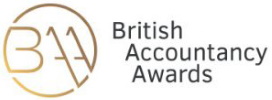Business owners face a full range of different financial responsibilities. Whether it’s income tax, VAT, employee benefits or even just simple utilities. However, there is one cost that isn’t talked about as much- business rates. Business rates are a tax charged on non-domestic properties, affecting the vast majority of companies. In fact, these rates are even applicable to those who use only part of a building for work. With this in mind, it’s important to fully understand exactly what business rates are and how they may affect you and your business.
Who has to pay?
Business rates are charged on most non-domestic/commercial properties. We immediately think of shops and office spaces but this also includes warehouses, pubs, factories and even holiday rental homes. Basically, any non-domestic space in which business is conducted.
It’s worth noting that some properties are exempt from business rates. These include agricultural lands and buildings, buildings used for the training and welfare of disabled people and registered religious buildings.
How Much?
The way in which business rates are calculated is based on the property in question and its “rateable value”. The rateable value is an estimate of how much a property would achieve in rent over a year, if it was let on the open market. This value is calculated by the Valuation Office Agency or VOA.
Your business rates are then calculated using the rateable value and a multiplier, either the standard multiplier or the small business multiplier. Obviously, specific figures vary but business rates are usually around half the rateable value.
Relief
Business rates can be one of the largest outgoings that companies face and therefore any relief is welcome.
We should first note that there are different rules applicable, when a property is left empty. Empty properties get three months relief from business rates, known as empty rates relief. However, normal charges continue after this three-month period.
There are specific examples in which relief goes beyond these three months. For example, industrial premises are eligible for up to six months of relief, whilst empty. Both listed buildings and those with a rateable value under £2,900 are completely free of business rates whilst empty. The same goes for properties owned by charities and amateur sports clubs, as long as the premises are continually used for these purposes.
What about when you’re actually using the property? Fortunately, you can apply for business rates relief, as long as you meet a specific criteria.
Eligible schemes include:
-
Small business rate exemption (businesses who use one property, with a rateable value of £15,000 or less).
-
Rural rate relief (single businesses in a rural area with a population of 3,000 or less, e.g. the only shop or pub).
-
Charities and sports clubs.
-
Transitional relief (for businesses who see their rates increase due to property revaluation).
-
Retail discount (for shops, cafes, bars and restaurants with rateable values under £51,000).
-
Businesses in enterprise zones.
Appeal
If you think your business rates are in some way incorrect, there is an appeal process available. You can utilise the Valuation Tribunal Service, who act as an independent body, offering dispute resolution.
Business rates can seem complicated at first, particularly for those new to the business world. However, it’s only with knowledge on what you need to pay and any relevant relief schemes, that you can save money. Fortunately, there is a wealth of expert help available. The experienced team at Salhan Accountants offer a variety of financial solutions- including guidance on business rates.
















